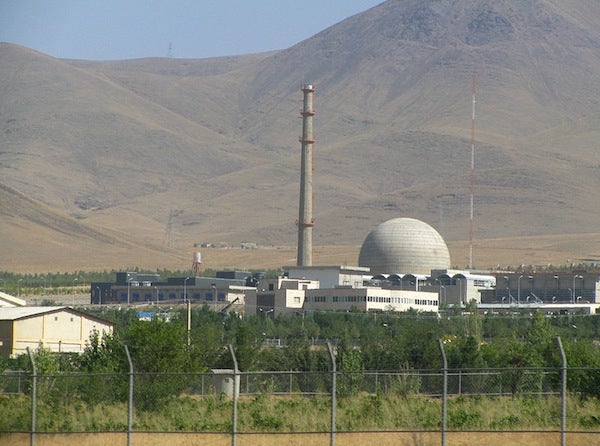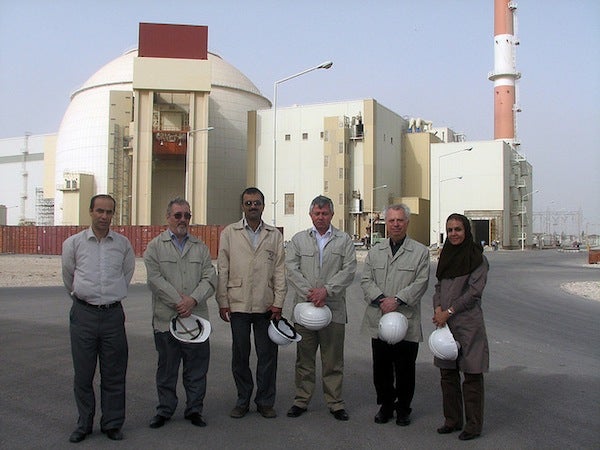This article was published in Scientific American’s former blog network and reflects the views of the author, not necessarily those of Scientific American
As a scientist I am acutely aware of the perils associated with predicting the future. On a professional level, like many of my colleagues, I write grant proposals describing my planned research over the coming three to five years. However, even as I write, I know that the plans are in part fiction. As new and unexpected experimental or theoretical discoveries are made, my research focus changes in response. The world of science evolves at a lightning pace. Thus, as I often tell my students, no active researcher is likely to accurately know what they will be working on three years from now.
What is true for science is certainly also true for world affairs, and in particular when it comes to national security. To be able to accurately assess all of the likely security concerns globally a decade from now is highly unlikely at best.
It is in this context that current anxieties in the U.S. regarding the potential ability of Iran to produce nuclear weapons 15 years from now—when many of the restrictions of the proposed agreement limiting Iran’s nuclear capability in exchange for lifting international financial sanctions expire—should be considered.
On supporting science journalism
If you're enjoying this article, consider supporting our award-winning journalism by subscribing. By purchasing a subscription you are helping to ensure the future of impactful stories about the discoveries and ideas shaping our world today.
In 1940, even in the midst of war, not even most physicists could have anticipated the game-changing role that nuclear weapons would have on international conflicts a mere five years later. In 1978, when I was still a Ph.D. student at MIT and at least 15 percent of the foreign incoming engineering students were from Iran, none of us could have anticipated that merely a year later the Iranian Revolution would completely change the security relationship between the U.S. and their home country. Following the tumultuous presidential election in 2000, few of us might have imagined that 9/11 and the invasion of Iraq would almost completely change the focus of U.S. foreign policy and the nature of national security threats for much of the last decade.

Arak IR-40 Heavy Water Reactor, Iran. (Source: Nanking2012/Wikimedia Commons)
The Bulletin of the Atomic Scientistswas established in 1945 by former Manhattan Project scientists to address the existential threat posed by nuclear weapons, but as constant and deep a threat as these weapons have been, even we at the Bulletin have had to examine other dangers on a yearly basis(I chair the Board of Sponsors). A decade ago we began to explore hazards such as bioterrorism and human-induced climate change. More recently, a new deep threat emerged on the radar: cyberterrorism.
When it comes to uncertainties associated with the Iranian nuclear deal, as my Bulletin colleague Frank Von Hippel, founder of Princeton University's Program on Science and Global Security, recently argued, “In 10 years we may still be worrying about Iran, but may also be worrying about Saudi Arabia, Egypt and Turkey having enrichment programs.” Dynamics in the Middle East change rapidly on a regular basis, as events in Egypt and Syria have underscored.
At the same time Iran has many internal pressures on its policies, and the $50 billion plus in frozen assets that will become accessible if the nuclear agreement goes through could easily have a greater effect on its domestic and foreign policies than its nuclear program itself. Where Iran will be in 15 years in relation to its friends and enemies in the region and its partnerships with global powers is, it is fair to say, anyone’s guess.

IAEA’s Integrated Regulatory Review Service (IRRS) mission members visited Iran’s first nuclear power plant in Bushehr in February 2010 when it was in preparation for operation, as part of their review of the country’s safety regulation of the power plant. (Photo by AEOI/INRA courtesy of IAEA/Flickr)
While many of the provisions of the proposed agreement expire after 15 years, many enhanced verification procedures, none of which are in place now, will continue well beyond that time. Iran’s adherence to the Additional Protocol of the International Atomic Energy Agency is permanent, including its significant access and transparency obligations. Inspections of Iran’s uranium supply chain will last for 25 years. Thus, as physics colleague and Secretary of Energy Ernest Moniz said recently, “The difference is whether one is going to be confronted with a very large Iranian nuclear program essentially tomorrow, with little verification … versus an Iran that could rebuild a substantial program after 15 years, but with consider enhanced verification…”
In large part, as the recent letter to President Obama from 32 major scientists supporting the current agreement underscores, the technical verification components and restrictions on nuclear technology created by the proposed agreement are both comprehensive and unprecedented. Given this, the question becomes, should Congress hesitate to support the agreement because it doesn’t have an unrestricted timeframe?
As Secretary Moniz has also recently emphasized “…there’s a concern that okay, after 15 years they become a threshold state. But of course we point out that they are today a threshold state”.
Fifteen years is an eternity in international affairs, just as it is in science and technology in the current world. Should we scuttle a nuclear deal, which takes Iran from its current threshold nuclear capability with limited international verification and access to one that removes the capability for at least 10 to 15 years, because of a concern about what might happen more than a decade from now?
With the presidential campaign just beginning in the U.S., we have no idea what the foreign policy direction of the country will be just 18 months from now. Neither can we be certain about what new international security threats may arise just beyond our current technological horizon of perhaps 18 months to two years. Seen in this light, concerns about scenarios that may unfold 15 years from now seem more like worrying about science fiction than dealing with urgent current realities.